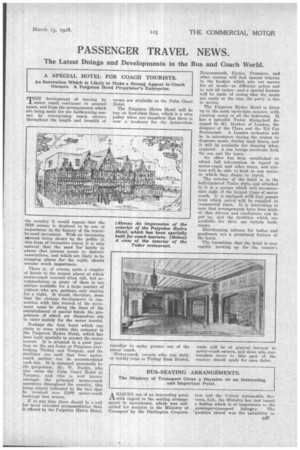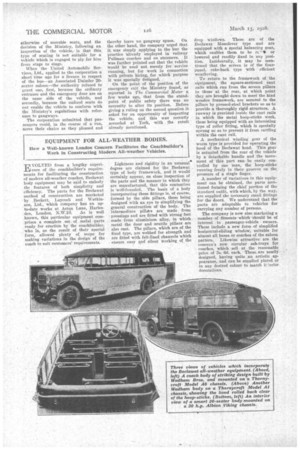BUS-SEATING ARRANGEMENTS.
Page 77

Page 78

If you've noticed an error in this article please click here to report it so we can fix it.
The Ministry of Transport Gives a Decision on an Interesting and Important Point.
ARISING out of an interesting point with regard to the, seating arrangements in motorbuses, which was submitted for decision to the Ministry of Transport by the Darlington Corpora tion and the United Automobile Services, Ltd., the Ministry has just issued a finding which is of importance to the passenger-transport irifi uVry. The 'question raised was the suitability or
otherwise of movable seats, and the decision of the Ministry, following an inspection of the vehicle, • is that this type of seating is not suitable for a vehicle which is engaged to ply for hire from stage to stage.
When the -United Automobile Services,. Ltd., applied to the corporation a short time ago for a licence in respect of the bus--an Associated Daimler 20seater saloon—theauthority refused to ' grant one, ,first, because the ordinary entrance and the emergency door are on the same side of the vehicle, and secondly, because the unfixed seats do not enable the vehicle to conform with the Ministry's regulations with reference to gangways.
The corporation submitted that passengers could, in the course of a run, move their chairs as they pleased and
thereby leave no gangway space. On the other hand, the company urged that it was simply applying to the bus the practice 'already employed in railway Pullman coaches and on steamers. It was further pointed out that the vehicle would be used not. merely for service running, but for work in connection with private hiring, for which purpose it was specially designed.
On the point of the position of the emergency exit the Ministry found, as reported in The Commercial Motor a few weeks ago, that from the stand point of public safety there was no necessity to alter its position. Before giving a ruling on the second question it asked for an opportunity of inspecting the vehicle, and this was recently accorded at York, with the result already Mentioned.




























































































































